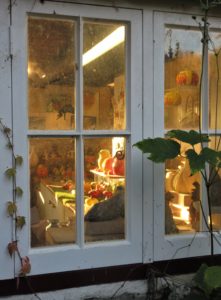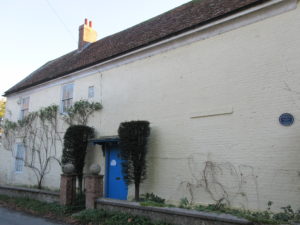The National Trust own much of the land and property in the village of Slindon as a traditional Sussex Estate.
For over 40 years the late Ralph Upton grew pumpkins in Slindon which attracted visitors from around the world with his autumn displays. From September to November the barns which adjoin his former home are full of varieties of pumpkins and squash. After his death in 2009 aged 87, his son Robin and team have kept the tradition alive to preserve Slindon’s reputation as Britain’s pumpkin capital.
So,on a bright and sunny early November afternoon we decided to take a peak at this year’s pumpkins and enjoy a walk around the village.
In all, the Slindon Estate is 3500 ares of Sussex woodland, farmland and downland divided by hedges, public footpaths and bridleways.
It was a wonderful day for photographs and after parking beside the Church of St Richard, built in 1865 standing at the top of the village we headed off to view the pumpkins.
We were not disappointed. Despite Halloween being over there were still masses on display of all sizes. I even bought a Spaghetti Pumpkin to make some soup with. With an onion and garlic base, I added red lentils, a sweet potato, red pepper, carrot, vegetable stock cube and the pumpkin – it turned out delicious. Even my grandson said so!
Walking on along the top road you pass The Pottery, established in the mid-1970’s when the building was converted from a builder’s workshop. Originally, the building was the estate wheelwright and carpenter’s shop.
The pottery is hand made by Janet Upton and is mostly wheel thrown. Items can be made to order and there is a selection of cards, crafts and prints also on sale. It is usually open daily from 10.30 – 12 and 2 – 4 pm, but closed on Tuesdays.
As you travel a little further you come to Bleak House, a large cream house dating from 1719 and bears a blue plaque commemorating the fact that it was the home of writer, Hilaire Belloc from 1870 to 1953. One of his famous works being the poem Matilda, the story of a young girl who was burnt to death because of the lies she told.
Following the main road past Mill Lane off to the right, you begin to descend, passing the old Bakery on the right. You then pass the old school before reaching Gaston Farm. The farm has an Open Lambing event in March/April where you can see the lambs being born.
Slindon is certainly a place of history, from smugglers to saints, duck ponds and an ancient cattle pound. It also boasts to be the birthplace of cricket – a memorial bat, ball and wicket. The cricket club is still playing after more than 250 years. Be sure to visit if in the area!









